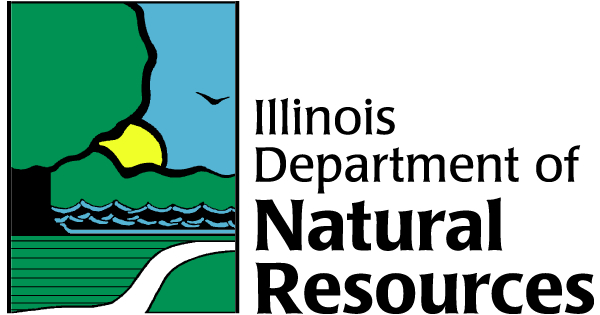Hiking
A hiking trail that winds along the top of a bluff overlooking the creek crosses scenic Piney Creek. The trail is especially beautiful in the autumn when fall colors abound, and also in the winter, when the leafless trees allow unconstricted viewing into the ravine below.
Rock Art (Petroglyphs)
Piney Creek Ravine contains the largest body of prehistoric rock art in Illinois. Almost 200 designs believed to date to the Late Woodland (A.D. 500-1000) and Mississippian (A.D. 1000-1550) periods occur within the ravine. Prehistoric rock art was created by either pecking and grinding (petroglyphs) or painting (pictographs) designs on rock surfaces. Petroglyphs were created by using a small hard rock as a hammer to peck a design into a softer rock, such as sandstone. Paintings were created by grinding minerals, such as limestone, into a yellow or red powder, which when mixed with animal fat adheres to rock surfaces.
Petroglyphs that can be seen within Piney Creek Ravine include human figures, deer, serpents and crosses. Pictographs within the ravine include human figures, deer, birds, human hands and a canoe.
A commonly asked question is "Why was rock art created?" Many of the designs within Piney Creek Ravine appear to have been created as part of religious ceremonies. These include pecked human-like figures with wings instead of arms, a common method in Native American religious art of portraying beings with spiritual power. Other human-like figures appear to be wearing horned head dresses, again an indication of spiritual power. The deer and bird images found within the ravine also may represent spirits rather than actual animals.
The rock art within Piney Creek Ravine represents a legacy left to us by the prehistoric Native Americans who once lived within the area. It can be easily damaged or degraded. Any chalking, painting, drawing, carving or other disturbance to the rock art or any rock surface within the ravine is forbidden under state law and is punishable by fines. Limit your interaction with rock art to taking photographs. Help protect and preserve this unique gift left to us by the earliest inhabitants of this area.
Natural Features
Plants at Piney Creek Ravine are more typically northern in distribution, as well as Ozarkian southern species. Differing habitat types also contribute to the general diversity of Piney Creek Ravine. Communities range from dry, exposed bluff associations, dominated by post oak, blackjack oak and American agave, to moist ravine forests with splendid spring wildflowers and sandy stream banks with a variety of moisture-loving plants, such as sedges, smartweeds and scouring rushes.
Several rare plant species, including a fern, sedge and buttercup, as well as the native short-leaved pine, occur within the preserve. The ravine provides moist, shaded habitat that is well suited for a variety of non-flowering plants such as mosses and liverworts. One of the most interesting is sphagnum moss, which forms spongy, layered mats and is more characteristic of northern Illinois. A very common plant is poison ivy, which can be recognized by three-part leaves, and can cause a rash on most people exposed to the plant.
Piney Creek Ravine provides year-round bird watching opportunities, especially during spring migration and throughout the summer. A variety of reptiles and amphibians, including the American toad, box turtle, fence lizard, rough green snake, garter snake and blue racer, have been recorded from the area. Copperheads are the only venomous snakes reported here, but timber rattlesnakes may be present. Common mammals of the preserve include opossum, cottontail, chipmunk, grey and fox squirrel, raccoon and white-tailed deer.
Because Piney Creek Ravine is a dedicated nature preserve, no hunting, no canoeing, kayaking or consumptive use is allowed. Camping is prohibited. Hiking, sightseeing and bird watching are permissible. Please leave the area litter free when you leave and enjoy this unique state site.





